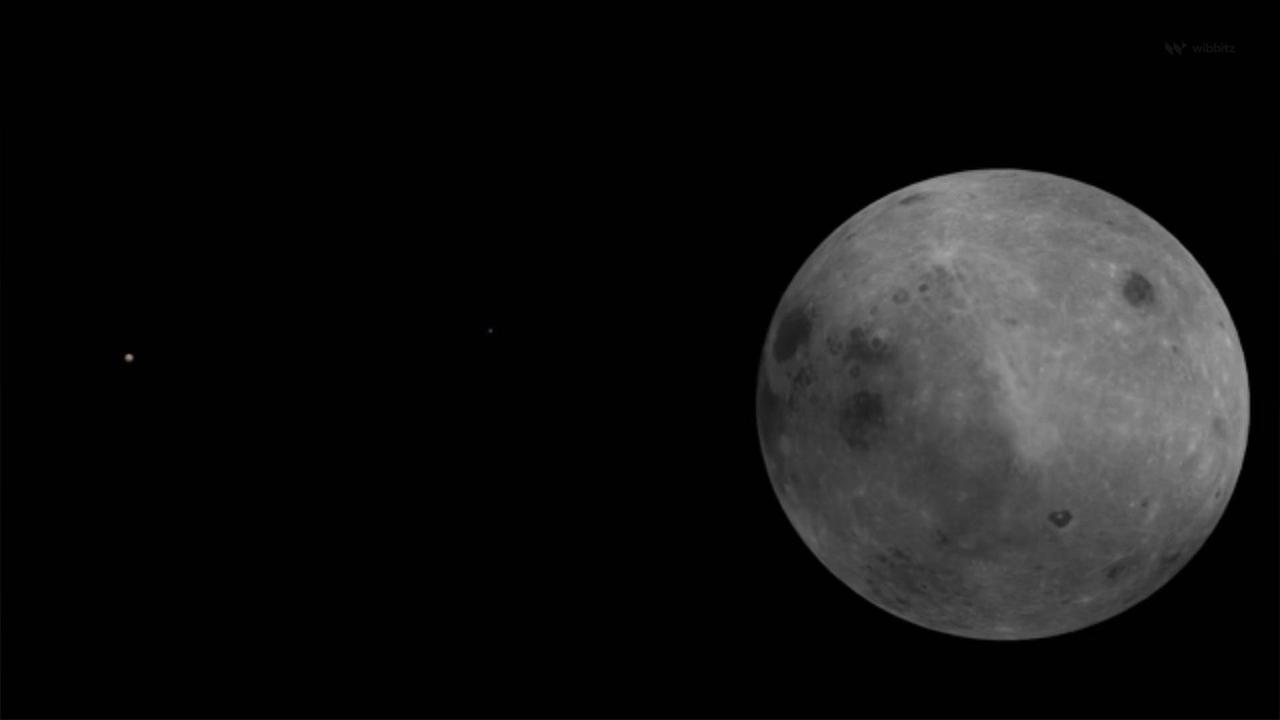ESA and China Space Agency Collaboration Detects Negative Ions on Dark Side of Moon

ESA and China Space Agency Collaboration Detects Negative Ions on Dark Side of Moon
ESA and China Space Agency , Collaboration Detects Negative Ions , on Dark Side of Moon.
China's Chang'e-6 lunar lander landed on the dark side of the Moon, successfully gathered samples and lifted off in just over 48 hours.
.
'Futurism' reports that the historic feat resulted in the first-ever samples collected from the far side of the Moon, which permanently faces away from the Earth.
The trip also saw the lander deposit several scientific payloads, including the Negative Ions at the Lunar Surface (NILS) instrument for the European Space Agency.
This was ESA’s first activity on the surface of the Moon, a world-first scientifically, and a first lunar cooperation with China, Neil Melville, ESA’s technical officer for the experiment, via 'Futurism'.
The moon's lack of a magnetic field makes the surface extremely vulnerable to charged solar particles, which create negatively charged ions.
.
Before it could make its observations, the NILS instrument had to be adjusted to the extreme lunar surface conditions, going through a cycle of reboots and blackouts.
Once it adjusted, the instrument detected negative ions from solar winds bombarding the Moon's surface and successfully transmitted back usable data.
We have collected an amount and quality of data far beyond our expectations, Neil Melville, ESA’s technical officer for the experiment, via 'Futurism'.
'Futurism' explains that the data could have significant implications for our understanding of how our celestial neighborhood deals without having a magnetic field.
.
These observations on the Moon will help us better understand the surface environment and act as a pathfinder to explore negative ion populations in other airless bodies in the Solar System, from planets to asteroids and other moons, Martin Wieser, NILS principal investigator, via 'Futurism'


![Former South Korean President Moon Jae-in indicted on bribery charges [Video]](https://video.newsserve.net/300/v/20250424/1408958104-Former-South-Korean-President-Moon-Jae-in-indicted.jpg)
![Spectators see partial solar eclipse from Observatory [Video]](https://video.newsserve.net/300/v/20250329/1406548406-Spectators-see-partial-solar-eclipse-from-Observatory.jpg)
![Firefly Aerospace's Blue Ghost lander successfully lands on the Moon [Video]](https://video.newsserve.net/300/v/20250302/1403973912-Firefly-Aerospace-Blue-Ghost-lander-successfully-lands.jpg)

![ESA's space probe captures detailed images of Mars and its mysterious moon [Video]](https://video.newsserve.net/300/v/20250313/1404988320-ESA-space-probe-captures-detailed-images-of.jpg)
![China Raises Flag on the 'Dark Side' of the Moon [Video]](https://video.newsserve.net/300/v/20240605/1377567580-China-Raises-Flag-on-the-Dark-Side-of.jpg)
![China's Chang'e 6 mission travels back to earth from the dark side of the moon | DW News [Video]](https://video.newsserve.net/300/v/20240605/1717585712-China-apos-Chang-apos-mission.jpg)
![China’s lunar probe on way back to Earth from far side of the moon [Video]](https://video.newsserve.net/300/v/20240605/1717568196-China-lunar-probe-on-way-back-to.jpg)